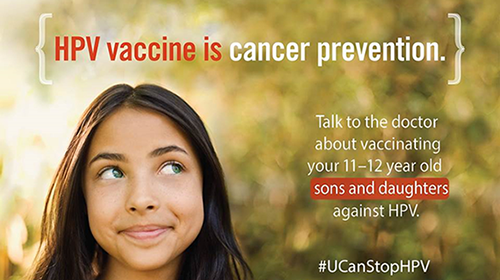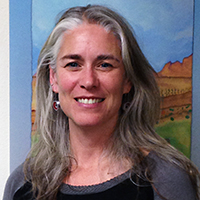Human papillomavirus, or HPV, is a common virus that can affect both boys and girls. HPV causes a variety of cancers, including most cervical cancers. In 2013, cervical cancer killed over 4,217 women. It is a significant health issue for all women, but especially for American Indian and Alaska Native (AI/AN) women. Studies have shown that from 1999-2009, AI/AN women were at a higher risk for developing cervical cancer than white women. 1
The best way to prevent HPV, infection and HPV related-cancers is by getting the HPV vaccine. The HPV vaccine is recommended for all boys and girls 11-12 years of age, and can be given through age 26. The HPV vaccine is a series of either two or three shots depending on the age of the adolescent when they start the series. For more information on the HPV vaccine schedule visit Use of a 2-Dose Schedule for Human Papillomavirus Vaccination .
Despite this recommendation, coverage with the first dose of HPV vaccine lags behind coverage with the Tdap and meningococcal vaccines, which are also recommended for 11-12 year olds. At the end of fiscal year 2016, 82% of IHS adolescent patients between the ages of 13 – 17 years received their first HPV vaccine, compared to 92% who received the Tdap vaccine. Fifty-six percent of adolescent IHS patients received all three doses of HPV vaccine, which means 44%, or 30,465 patients, did not receive all three doses of the HPV vaccine. 2 That’s a large number of adolescents who are now at risk for developing HPV related cancers.
The second step in prevention for cervical cancer is staying up to date on regular cervical cancer screenings. When cervical cancer is found early, it is highly treatable and associated with long survival and a good quality of life.3 After turning 21, every woman should be seeing her healthcare provider for regular Pap screenings. The Pap test detects cell changes on your cervix that in time may develop into cervical cancer. Patients should discuss the test results with their healthcare provider so they are aware of what they mean and when their next pap test should be.
IHS is proud to have dedicated staff in the field working to improve HPV vaccination rates. From 2013-2015 the IHS immunization program partnered with 10 sites interested in undertaking an initiative to improve HPV vaccine coverage . Using multi-faceted approaches, which included expanding reminder recall efforts, conducting community education, and implementing standing orders to establish nurse only and walk in immunization clinics to increase access to HPV vaccines, participating sites were able to increase coverage with the first dose of HPV vaccine an average of 24% over a two-year period, and increase coverage with three doses of HPV vaccine by an average of 22%. For more information on one facility’s experience, please see the recorded webinar here – CMEs and CEUS are available!

References:
- Watson, M., et al., (2014). Cervical Cancer Incidence and Mortality among American Indian and Alaska Native Women, 1999-2009. American Journal of Public Health, Supplement 3 2014:104, S415-S422
- Division of Cancer Prevention and Control, Centers for Disease Control and Prevention. (2014). How Many Cancers are Linked with HPV Each Year? See the CDC’s cervical cancer statistics page .
- Division of Cancer Prevention and Control, Centers for Disease Control and Prevention. (2015). See the CDC’s cervical cancer informational page .



